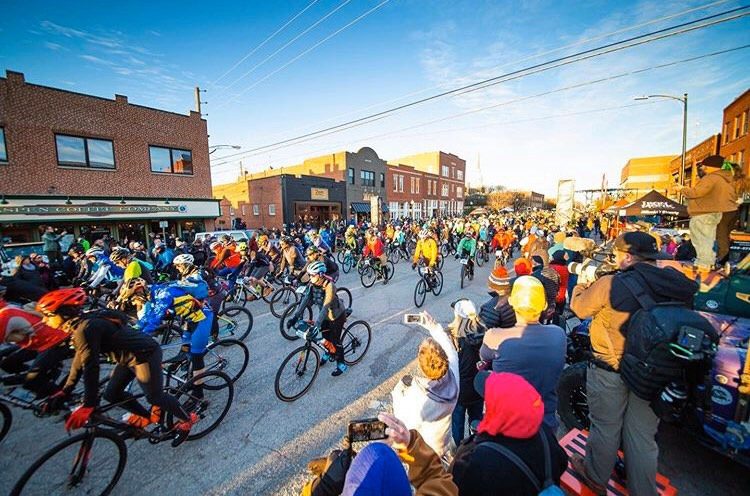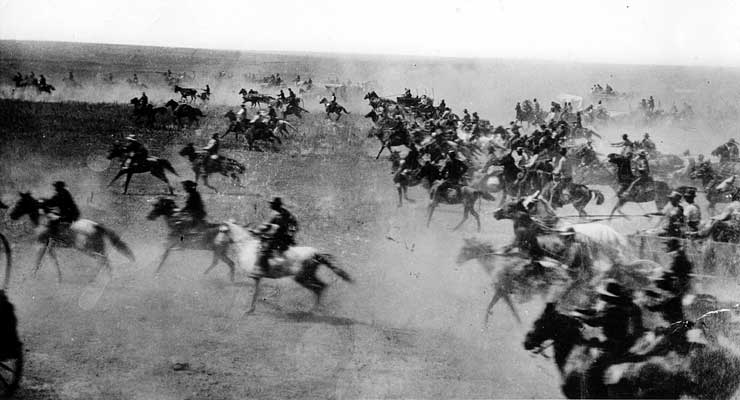Why the Land Run 100 changed its name to the Mid South
The dark history of the Oklahoma land run

The Mid South race, previously known as the Land Run 100, started in 2012, with 120 participants. Every year the race has grown, and, this weekend, 3,000 participants will line up to ride gravel or run in the quiet town of Stillwater, Oklahoma. The gravel race covers 100 miles, with roads ranging from smooth, hard packed trails to muddy, almost unrideable Oklahoma red dirt. “Friendships and deep connections have been built around this dirt road riding that will last a lifetime,” says Bobby Wintle, Mid South director. “I wanted this event to bring people together for a reunion of sorts. To celebrate, to laugh, to cry, and to experience this event together.”
View this post on Instagram
Despite the positive vibes of the event, the name of the race, the Land Run 100, had a dark history. The name referred to the Oklahoma land run of 1889. At noon on April 22, 1889, an estimated 50,000 people lined up for the chance to grab a piece of the two million acres of Oklahoma land the government was “giving away”. Cannons sounded and settlers dashed across the land, claiming their new homes.
Cities in the area tend to frame the event as the founding moment of Oklahoma. Local historical plaques and celebratory events depict the land run as brave settlers claiming unoccupied land, waiting to be cultivated. The reality is much darker.
Oklahoma was once home to a thriving native American community. In 1887, the Dawes Severalty Act introduced private land ownership to natives Americans, but forcibly moved them to small areas of land, taking away millions of acres of indigenous territory. As many as 40 tribes, including the Chickasaw, Choctaw, Cherokee, Creek, Cheyenne, Comanche and Apache, were relocated from their traditional lands. Tens of thousands Native Americans were murdered defending their right to stay, or died during the journey to the new territory.
A new name
Wintle admits he did not know this aspect of the land run’s history when he created the event. In an honest letter posted on the event’s website, he outlines the reasons for the name change and his regret in making anyone feel unwelcome.
View this post on Instagram
“I want zero barriers to exist for a person to want to be a part of this experience,” says Wintle. “The meaning and depth within a name can be simple and to the point, or full of references from the past and information not easily recognized by many. It’s easy to overlook the meaning of any name. It’s even easier to not be aware of how certain words or names may make others feel especially if their association with a name is different from ours. It is incredibly important for us to realize that our perception is shaped by our experiences and is not the only reality that matters or exists. It is beautiful when we learn and when we are vulnerable enough to listen. ”
The new name of the event, the Mid South, is, according to Wintle, “an evolution of all the ways this event has changed over the last 7 years.”

